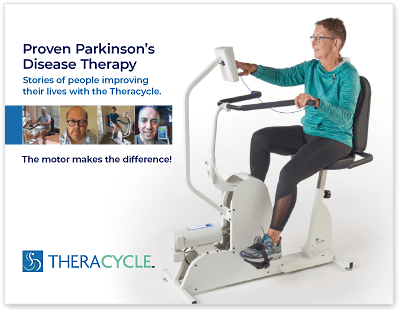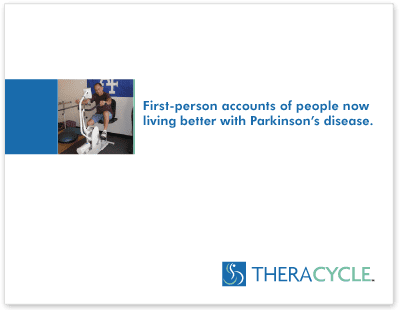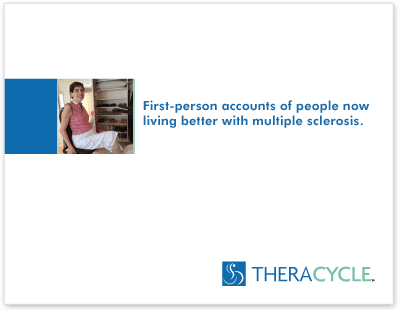- ›
- Stories
- ›
- Tips and Advice
- ›
- Understanding Medicare Coverage for Parkinson’s Disease Patients
Stories
Understanding Medicare Coverage for Parkinson’s Disease Patients


From: Healthline – www.healthline.com – Medically reviewed by Shilpa Amin, M.D., CAQ, FAAFP — Written by Corey Whelan — Updated on April 21, 2021
- Medicare covers medications, therapies, and other services involved treating Parkinson’s disease and its symptoms.
- Physical therapy, occupational therapy, and speech therapy are all included in this coverage.
- You can expect some out-of-pockets costs, even with your Medicare coverage.
Medicare covers medically necessary treatments for Parkinson’s disease, including medications, different types of therapy, and hospital stays. Based on the type of coverage you have, you may have some out-of-pocket expenses, such as copays, coinsurance, and premiums.
Medicare may not cover all of the services you’ll need, such as assistance for normal daily living.
If you or a loved one has Parkinson’s disease, it’s important for you to understand which parts of Medicare cover which treatments to avoid large, unexpected expenses.
Parkinson’s disease and Medicare coverage
Medicare is made up of multiple parts. Each part covers different services and treatments that you’ll need to manage Parkinson’s.
Original Medicare is composed of Part A and Part B. Part A covers a portion of your inpatient hospitalization costs. Part B provides coverage of outpatient medical needs including those for diagnosis, treatment, and prevention.
Part A coverage
Part A covers the following services related to Parkinson’s disease:
- inpatient hospital care including meals, doctor’s visits, blood transfusions, onsite medications, and therapeutic treatments
- surgical procedures
- hospice care
- limited or intermittent skilled nursing facility care
Medicare Part A is premium-free for most people. However, in 2021, you can expect to pay a deductible of $1,484 for each benefit period before your services are covered.
You may also be billed for additional coinsurance costs of $371 per day if you stay in the hospital for more than 60 days. After 90 days, that cost goes up to $742 daily for each lifetime reserve day used until they are used up. After that, you are responsible for the full cost of hospital treatment.
Part B coverage
Part B will cover the following items and services related to your care:
- outpatient services such as general practitioner and specialist appointments
- screenings and preventive services
- diagnostic tests
- durable medical equipment (DME)
- ambulance service
- occupational and physical therapy
- speech therapy
- mental health services
In 2021, the standard monthly premium for Part B is $148.50. There is also a Medicare Part B annual deductible, which is $203 in 2021. After your deductible is met, you will only be responsible for paying 20 percent of covered services provided through Part B.
Part C coverage
Medicare Part C (Medicare Advantage) is a health insurance plan you can buy from a private insurer. Part C coverage varies from plan to plan but is required to provide at least the same coverage as original Medicare. Some Part C plans also cover medications and add-on services, such as vision and dental care.
Part C plans typically require that you choose your doctors and providers from within their network.
Out-of-pocket costs for Part C plans can vary. Some don’t have monthly premiums, but others do. You can usually expect to pay copays, coinsurance, and deductibles with a Part C plan.
The highest possible deductible in 2021 for a Part C plan is $7,550.
Some Part C plans require you to pay 20 percent coinsurance until you reach an out-of-pocket maximum, which also varies per plan. Always check your specific coverage to determine the out-of-pocket costs you can expect.
Part D coverage
Part D covers prescription medications and is also purchased from a private insurance company. If you have a Part C plan, you might not need a Part D plan.
Different plans cover different medications, which is known as a formulary. While all Part D plans cover some of the medications you may need for treating Parkinson’s, it’s important to check that any medication you take or may need later on is covered under your plan.
Just like with Part C, Part D plans also vary in terms of out-of-pocket costs for premiums, deductibles, and copays. Each Part plan also has a formulary that explains how much you’ll pay for certain medications based on a tier system.
Medigap coverage
Medigap, or Medicare supplemental insurance, covers some or all of the financial gaps left over from original Medicare. These costs may include deductibles, copays, and coinsurance. If you have a Part C plan, you are not eligible to buy a Medigap plan.
There are many Medigap plans to choose from. Some provide broader coverage than others but come with higher premium costs. Prescription drug costs are not covered under Medigap.
Medigap plans differ in costs and coverage as well. Some offer high-deductible options with lower monthly premiums.
Parkinson’s disease treatments covered
Parkinson’s disease can come with a wide range of motor and nonmotor symptoms. The symptoms of this condition can be different for different people.
Since it is a progressive disease, symptoms can change over time. Medicare covers a range of different treatments, medications, and services that you may need to manage Parkinson’s disease throughout your life.
Medications
Parkinson’s disease is known to cause lowered levels of dopamine in the brain. It also causes certain types of brain cells to breakdown or die off. This leads to tremors and other problems with motor function.
Medicare covers medications that can act the same way or replace dopamine. It also covers other medications called COMT inhibitors, which prolong or enhance the effect of dopamine drugs.
Mood disorders such as apathy, anxiety, and depression, as well as psychosis, are common among people with Parkinson’s. Medications that address these conditions are also covered by Medicare. Some examples of these types of drugs include:
- MAO inhibitors, such as isocarboxazid (Marplan), phenelzine (Nardil), selegiline (Zelapar), and tranylcypromine (Parnate)
- antipsychotic medications, such as pimavanserin (Nuplazid) and clozapine (Versacloz)
Services and therapies
Treatments for Parkinson’s disease focus on symptom control. Services and treatments that Medicare covers for this condition include those described in the following sections.
Focused ultrasound
This noninvasive treatment delivers ultrasound energy deep into the brain. It can be used in the early stages Parkinson’s to reduce tremors and improve motor function.
Deep brain stimulation
If medications have helped you in the past but are no longer strong enough to treat symptoms such as tremors, rigidity, and muscle spasms, your doctor may recommend deep brain stimulation.
This is a surgical procedure where a surgeon will implant an electrode into the brain. The electrode is attached by surgical wires to a battery-operated neurostimulator device, which is implanted in the chest.
Duopa pump
If your carbidopa/levodopa oral dopamine medication has become less effective than it used to be, your doctor might recommend a Duopa pump. This device delivers medication in a gel form directly into the intestinal tract via a small hole (stoma) made in the stomach.
Skilled nursing care
At-home, part-time skilled nursing care is covered by Medicare for a limited amount of time. The time limit is usually 21 days for cost-free services. Your doctor can extend this limit if there’s an estimated time for how long you’ll need these services and submit a letter stating your medical need.
Care at a skilled nursing facility is covered at no cost for the first 20 days, and then from days 21 through 100, you’ll pay a daily copay. After 100 days, you will pay the full cost of your stay and services.
Occupational and physical therapy
Parkinson’s can affect both large and small muscle groups. Occupational therapy focuses on small muscle groups, such as in the fingers. Physical therapy focuses on large muscle groups, such as in the legs.
Therapists can teach people with Parkinson’s different exercises to maintain everyday activities and improve their quality of life. These activities include eating and drinking, walking, sitting, changing position while reclining, and handwriting.
Speech therapy
Difficulty with speech and swallowing can be caused by weakening of the muscles in the larynx (voice box), mouth, tongue, lips, and throat. A speech-language pathologist or speech therapist can help people with Parkinson’s maintain verbal and nonverbal communication skills.
Mental health counseling
Depression, anxiety, psychosis, and problems with cognition are all potential nonmotor symptoms of Parkinson’s disease. Medicare covers depression screenings and mental health counseling services.
Durable medical equipment (DME)
Medicare covers specific types of DME. Some examples include:
- hospital beds
- walkers
- wheelchairs
- electric mobility scooters
- canes
- commode chairs
- home oxygen equipment
The following table provides an at-a-glance look at what is covered under each part of Medicare:
| Part of Medicare | Service/treatment covered |
|---|---|
| Part A | hospital stays, deep brain stimulation, Duopa pump therapy, limited home health care, medications given in a hospital setting |
| Part B | physical therapy, occupational therapy, speech therapy, doctor’s visits, laboratory and diagnostic imaging tests, DME, mental health services, |
| Part D | medications prescribed to you for at-home use, including dopamine drugs, COMT inhibitors, MAO inhibitors, and antipsychotic medications |
What doesn’t Medicare cover for Parkinson’s disease treatment?
Unfortunately, Medicare doesn’t cover everything you may think is medically necessary. These services include nonmedical custodial care for daily living activities, such as dressing, bathing, and cooking. Medicare also doesn’t cover long-term care or around-the-clock care.
Devices that might make life easier at home are not always covered. These include items such as a walk-in bathtub or stair lift.
What is Parkinson’s disease?
Parkinson’s disease is a progressive, neurodegenerative disorder. It is the second most common neurodegenerative disorder after Alzheimer’s disease.
The cause of Parkinson’s is not completely understood. Currently, there is no cure. Treatments for Parkinson’s disease are based on symptom control and management.
There are several different types of Parkinson’s disease, as well as similar neurological disorders known as “parkinsonisms.” These different types include:
- primary parkinsonism
- secondary parkinsonism (atypical parkinsonism)
- drug-induced parkinsonism
- vascular parkinsonism (cerebrovascular disease)
The takeaway
Parkinson’s disease is a condition that leads to declining cognitive and motor functioning over time. Medicare covers a wide range of treatments and medications that can be used combat the symptoms of this condition and improve your quality of life.
The information on this website may assist you in making personal decisions about insurance, but it is not intended to provide advice regarding the purchase or use of any insurance or insurance products. Healthline Media does not transact the business of insurance in any manner and is not licensed as an insurance company or producer in any U.S. jurisdiction. Healthline Media does not recommend or endorse any third parties that may transact the business of insurance.
Last medically reviewed on May 29, 2020 | 15 sources
Healthline has strict sourcing guidelines and relies on peer-reviewed studies, academic research institutions, and medical associations. We avoid using tertiary references. You can learn more about how we ensure our content is accurate and current by reading our editorial policy.
- COMT inhibitors. (n.d.).
parkinson.org/Understanding-Parkinsons/Treatment/Prescription-Medications/COMT-Inhibitors - Deep brain stimulation for movement disorders. (2020).
ninds.nih.gov/Disorders/Patient-Caregiver-Education/Fact-Sheets/Deep-Brain-Stimulation-Movement-Disorders-Fact - Diagnostic laboratory tests. (n.d.).
medicare.gov/coverage/diagnostic-laboratory-tests - Dopamine drugs and possible side effects. (n.d.).
hopkinsmedicine.org/neurology_neurosurgery/centers_clinics/restless-legs-syndrome/what-is-rls/problems.html - Final contract year 2021 Part C benefits review and evaluation. (2020).
https://www.gohealth.com/medicare/costs/medicare-out-of-pocket-maximum/ - Medicare costs at a glance. (n.d.).
medicare.gov/your-medicare-costs/medicare-costs-at-a-glance - Parkinson disease. (2020).
ghr.nlm.nih.gov/condition/parkinson-disease - Parkinson’s disease. (2020).
fusfoundation.org/diseases-and-conditions/neurological/parkinsons-disease - Parkinson’s disease. (2020).
niehs.nih.gov/health/topics/conditions/parkinson/index.cfm - Preventive & screening services. (n.d.). h
https://www.medicare.gov/coverage/preventive-screening-services - Roberts DK, et al. (2019). Medicare coverage and Parkinson’s.
davisphinneyfoundation.org/blog/medicare-coverage-and-parkinsons/ - Treatment & medication. (n.d.).
apdaparkinson.org/what-is-parkinsons/treatment-medication/ - What is Parkinson’s? (n.d.).
parkinson.org/understanding-parkinsons/what-is-parkinsons - What Part A covers. (n.d.).
medicare.gov/what-medicare-covers/what-part-a-covers - What Part B covers. (n.d.).
medicare.gov/what-medicare-covers/what-part-b-covers








